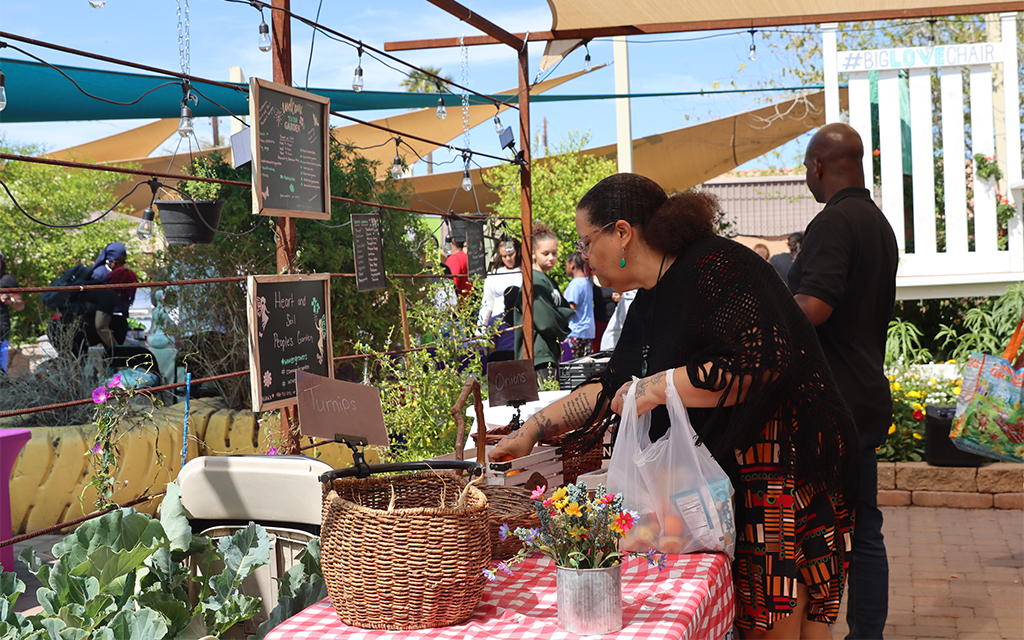WASHINGTON – When the Navajo Generating Station closed in 2019, taking hundreds of jobs with it, projects funded by the Economic Development Administration helped blunt some of the pain, Chris Fetzer told a Senate panel Wednesday.
Fetzer, executive director of the Northern Arizona Council of Governments, joined other local government officials from across the country who praised the program and called for a “long overdue” reauthorization of the fund – even as they all outlined ways it could be improved.
“Reauthorization of EDA is important and long overdue,” Fetzer said in testimony to Senate Environment and Public Works Committee. “EDA’s investments have catalyzed countless successful projects and outcomes in my region that would otherwise not have been possible.”
Sen. Tom Carper, D-Del., and chairman of the committee, said the administration has supported state and local governments in the development of everything from workforce development to infrastructure, from broadband to access to capital.
But Carper noted that the administration is badly in need of updating to reflect modern economic development needs. Its last full reauthorization was in 2004, he said, three years before the launch of the iPhone.
“Businesses are experiencing new challenges, as well new opportunities, such as how to operate more sustainably on a warmer planet,” Carper said in his opening statement. “Through reauthorization, we have an opportunity to modernize and improve EDA’s ability to foster additional economic growth.”
The administration was started in the 1960s with the goal of helping to bring jobs and economic development to rural and distressed areas of the country. A unit of the Department of Commerce, it describes itself as the only federal agency dedicated entirely to economic investments.
The program has a heavy local orientation – what one witness called “federalism at its finest” – with funding requests being organized through regional Economic Development Districts, which then administer any winning grants.
But witnesses at the hearing, who came from districts around the country, said that in order for them to maximize the impact of program funding on underserved communities, the administration needs more funding and streamlined operations.
Fetzer, who was also testifying in his role as president of the National Association of Development Organizations, called for a boost in EDA funding to $3 billion. The agency has a fiscal 2023 budget of $1.6 billion, according to its website.
One of the biggest hurdles is the current requirement that local governments post some matching funds to receive a grant from the administration. Many local communities are too small to make the match, said the witnesses, who called on lawmakers to reduce the local match to 10% for planning grants and 20% for actual project funding, with the federal government picking up the rest.
“EDA’s current local match requirements – for both planning grants and for projects – pose a significant barrier to entry for many communities in Arizona, and nationally,” Fetzer said.
Patricia Cannon, grantee administrator for the state of Delaware, agreed. She said local match requirements present a burden for small and underserved communities that lack the financial resources to make the mark.
Witnesses also asked for more funding for their own operations, saying that without additional staff to help local stakeholders navigate the often-complicated federal application process, the communities most in need could be left out.
“It’s imperative that federal agencies, like EDA, provide robust technical assistance to smaller or more distressed counties as they seek funding and approvals to implement crucial projects that will enable their communities to thrive,” said Eileen Higgins, county commissioner in Miami-Dade, Florida.
That was echoed by Fetzer, who said many communities he works with “don’t have the familiarity or the expertise with applying for some of the federal programs like EDA grants.” Organizations like NACOG can “provide that expertise and technical assistance to help them (local groups) identify projects that are eligible, prepare and submit applications and things of that nature.”
For all the problems, however, witnesses said the program is well worth the effort.
Fetzer pointed to an EDA program “called assistance to coal communities. It was utilized during the Navajo Generating Station impending closure.”
He said the same fund is being used to prepare local communities for the looming closure of other coal-fired power plants in the region. That includes partnering with Arizona State University to find new business uses for the Cholla power plant, expected to close in 2025, work funded through EDA grants.
“Today, drawing upon the lessons learned from the NGS closure – and determined to better anticipate similar scenarios in the future – our region is now engaging in proactive planning measures to prepare for the future closure of the three remaining coal plants that are still operational in the region,” Fetzer said after Wednesday’s hearing.



